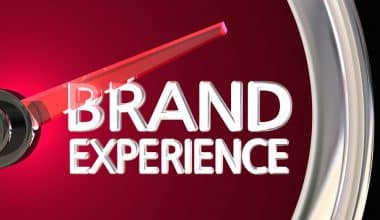When I first started creating my brand, I quickly understood that consistency was essential for making a distinctive impression. Obtaining this consistency across multiple platforms and materials was difficult without a robust structure. This is where the brand guidelines come in. They are critical for maintaining a consistent voice and visual identity, ensuring that your brand is easily identifiable and trustworthy. In this article, I will lead you through the principles of creating effective brand guidelines, backed up by insights and methods that go beyond the essentials.
Why Brand Guidelines Matter
Brand guidelines are a thorough collection of rules that specify how your brand should be portrayed across all platforms. These guidelines include everything from logo design and color palettes to tone of voice and typography. Consistent brand presentation can help your brand gain awareness and trust among your target audience.
When I initially established brand guidelines for my company, I observed a tremendous difference in how clients and customers engaged with our brand. Consistency in our marketing materials fostered trust and recognition, resulting in enhanced client loyalty.
What Should the Brand Guidelines Include?
There are several basic features that brand guidelines should include to help you and your team maintain consistency throughout your marketing initiatives. Here are some of the most critical details to include in your brand guidelines:
- Company information includes your brand’s history, mission, values, and vision.
- Imagery includes icons, graphic design components, and photo types that will be used.
- Logo design and use guidelines include color palette, file format(s), minimum and maximum sizes, contexts, spacing, and usage permissions, such as where images should and should not appear.
- Instructions on tone of voice and grammar standards.
- Cards and letterheads: A template for designing business cards and letterheads.
- Font styles and text sizes apply to both print and digital media.
- Color palette details, including CMYK and RGB codes.
Effective brand guidelines can be easily shared and understood by everyone involved in communicating your brand, both internally and externally.
That is why it is recommended that they be succinct, easy to read, and digitally accessible.
Key Elements of Brand Guidelines
#1. Brand Mission and Vision
Begin by outlining your brand’s mission and vision. These statements define your brand’s mission and long-term objectives.
Example: Patagonia’s mission statement, “We’re in business to save our home planet,” demonstrates the company’s dedication to environmental responsibility.
#2. Core Values
Identify the core values that guide your brand. These values influence your brand’s personality and decision-making process.
Example: Google’s basic principles include focusing on the user, doing one thing exceptionally well, and believing that speed is superior to slowness.
#3. Logo Usage
Your logo is the visual foundation of your brand identity. Provide explicit guidelines for how your logo should be used to ensure consistency.
Best Practices:
- Use both primary and secondary logo versions.
- Clear Space: Determine the minimum clear space around the logo.
- Do’s and Don’ts: Display correct and wrong usage examples.
#4. Color Palette
Specify your brand’s color scheme, including primary and secondary colors. The consistent use of color reinforces brand recognition.
Example: Coca-Cola’s combination of red and white has made its brand legendary.
#5. Typography
Define the typefaces and typographic styles used in your brand’s materials. A consistent typeface improves readability and reinforces the brand identity.
Best Practices:
- Use the primary font for headings and important content.
- Secondary Font: Applies to body text and secondary components.
- Hierarchy: Create a clear typographic hierarchy.
#6. Images and Graphics
Provide guidelines for the images and graphics that will represent your brand. This covers photographic styles, illustrations, and iconography.
Example: Apple’s usage of high-quality, simple graphics is consistent with the brand’s clean and inventive personality.
#7. Tone of Voice
Your brand’s voice is the way you communicate with your target audience. Define the tone, style, and language that your brand employs in all communications.
Best Practices:
- Personality: Describe your brand’s personality attributes, such as friendly or authoritative.
- Dos and Don’ts: Give examples of acceptable and incorrect language.
Example: Mailchimp’s warm and conversational tone makes its messaging more approachable and engaging.
#8. Templates and Applications
Include templates for frequently used brand items such as business cards, email signatures, and social media postings. These templates assure consistency while saving time.
A Brand Guidelines Template will help you create and maintain your brand’s identity more efficiently. It uses an organized approach to documenting all aspects of your brand, making it easy for your team to follow the guidelines.
Ready to create a cohesive and recognizable brand? Download our comprehensive Brand Guidelines Template now to streamline your branding process and ensure consistency across all your marketing efforts.
Implementing Your Brand Guidelines
Once you’ve created your brand guidelines, make sure they’re properly enforced across all platforms.
Your brand guidelines must be simple for employees and partners to comprehend, navigate, and apply. If they are too comprehensive or difficult to access, staff will not use them, and you will miss out on the brand-boosting benefits of having brand guidelines in the first place. Here are five best practices for developing useful, practical guidelines to help employees engage with your brand.
#1. Provide instructions and usage guidelines
Don’t only utilize your brand guidelines to store all of your branding aspects. Instead, include accompanying information and visuals that show how to use each of your brand pieces. Wherever feasible, put examples of “dos and don’ts” alongside each component to help staff understand what is and isn’t on-brand.
Employees who receive instructions and directions on how to use your brand elements will be more likely to follow your guidelines when creating their own branded items.
#2. Make the assets downloadable or easily accessible
Some brand guidelines compile all of your brand elements and explain how to apply them, while others need employees to trawl through Google Drive files to locate each aspect. To make it easy for employees to use your brand assets, make each element available immediately from your brand guidelines.
You can accomplish this by transferring your brand guidelines from a static PDF document to an online brand management platform.
If your brand guidelines include downloadable parts, they become a practical tool rather than theoretical instructions and counsel. Employees are more likely to use your brand assets (and use them appropriately) if they can find advice on how to use them and access the appropriate elements all in one location.
#3. Provide guidance for different channels
The manner you represent your brand identity may vary between media. Add a section to your brand guidelines that includes information relevant to various channels to assist your team in developing on-brand visuals and messages for each.
For example, if you utilize special Instagram filters or LinkedIn hashtags, you should include a social media component in your brand guidelines.
#4. Convert PDFs to Digital Brand Guidelines
Many businesses compile their brand guidelines into a PDF document to deliver to their employees. However, PDF brand guidelines can be difficult to track. As your brand evolves and your guidelines are updated, it might be difficult to determine whether everyone is utilizing the most recent version of the file or whether some teams are still using an older version.
Companies are increasingly using online brand platforms such as Frontify to house their brand guidelines. Digital brand guidelines are more convenient to navigate, update, and share than PDFs. As soon as you make changes, you can be confident that everyone has access to the updated version.
Your team will find it easier to access online brand guidelines than PDFs. Employees may bookmark the site and retrieve it anytime they need it, rather than having to search their downloads folder for the most recent version.
#5. Regularly update brand guidelines
Your brand will evolve organically as your company, product, and priorities shift. Your brand guidelines are intended to assist everyone on your team in expressing and communicating your brand identity to customers, prospects, and the market. However, if they are out of date, staff may be employing obsolete vocabulary or a visual style that you have abandoned.
Review your brand guidelines at least once a year to ensure that they still include all of the necessary assets and that all of the brand principles feel authentic. Then, add new pieces, remove obsolete ones, and replace examples to provide your team with the appropriate brand assets as well as fresh inspiration to assist them in creating their own brand materials based on your guidelines.
5 Examples of Great Brand Guidelines
#1. TikTok
TikTok, as a creator platform, must consider branding beyond internal stakeholders. Anyone who uses the video-sharing app to create or share content has the potential to have an impact on the brand. And, with over 800 million monthly users, good brand guidelines are critical to keeping a consistent image.
TikTok, like the other firms on our list, makes its entire brand guidelines freely available online, allowing anyone to be a brand ambassador. Anyone can get the most recent version of assets such as the corporate logo.
The guidelines also detail how other firms should use assets for co-branding, such as using TikTok’s logo alongside their own. And, because many firms utilize TikTok as a marketing platform, such guidance guarantees that the company’s global image remains consistent.
#2. Apline
Brand guidelines are ineffective unless they are simple to understand and implement. So, while thorough guidelines are crucial, they must also be user-friendly. And Alpine’s brand guidelines are an excellent example.
Alpine’s digital brand hub has a straightforward structure that is easy to use. The hub’s home page provides quick links to downloadable assets, as well as descriptions of their purpose and relevance. Other information includes brand color codes (which honor Alpine’s French roots) and how to use the corporate insignia.
#3. Ulna
When brand guidelines are broad and simple to apply, it is easy to see how they will be implemented in the actual world. Ulna, a false watch brand, is an excellent example of this.
Ulna takes pleasure in its clean, efficient design. And, while the brand isn’t real (which means you can’t buy an Ulna watch anywhere in the world), its brand guide is so detailed that it’s simple to envisage Ulna’s advertising and products if it were a legitimate watch manufacturer.
The digital brand guidelines contain downloads for key aspects such as the logo and web font.
However, they also provide more concrete resources that help you build new brand assets, such as a library of approved stock photographs and digital templates for creating new social media advertising. You can also download a mockup of the product’s packaging.
#4. Beyond Gravity
Good branding extends beyond fundamental assets such as logos and typefaces to incorporate an organization’s entire attitude and products. Detailed brand guidelines must do the same. Rocket Launch Experts Beyond Gravity accomplishes this by incorporating everything from a description of its identity to photography specs within its branding guidelines.
Beyond Gravity’s brand guidelines include:
- Downloadable audio files for the brand’s soundtrack and an audio rendition of its logo.
- Instructions for editing and adjusting color gradients in photographs.
- A list of dos and don’ts that makes it simple to talk about the company, its personnel, and its partners
- Suggestions on which materials to use when making physical copies of branded documents
#5. Sinch
People engage with brands through a multitude of channels, ranging from social media to email marketing. Consumers anticipate various things from brands across channels. That is why Sinch’s brand guidelines provide advice to help the brand satisfy those objectives while maintaining a consistent image.
Sinch’s brand guidelines help marketers and other team members succeed by making it clear what the brand’s tone of voice is. For example, the brand guidelines include several versions of the same technical fault message. To add context, each one includes notes explaining which elements of the message are effective and which do not correspond with the brand’s voice.
Conclusion
Establishing detailed brand guidelines is critical to maintaining a consistent and recognizable brand identity. By establishing components such as your logo, color palette, typography, artwork, and tone of voice, you can build a unified brand that connects with your audience. Have you begun designing your brand guidelines? What obstacles have you encountered, and how did you overcome them? Let’s continue the conversation in the comments section.
Related Articles
- The Power of Brand Monitoring Software: Unlocking Consumer Insights
- Brand Pitch Email Templates: What Major Companies Use To Land 85% Of Their Clients
- How To Become a Brand Ambassador: A Simple Plan For Regular People
- Brand Identity 101: Getting the Basics Right From the Start
- Elevate Your Brand’s Marketing Strategies With PR Boxes






